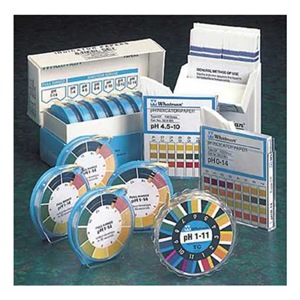Everything That You Should Know About pH Papers
pH papers are test papers which are soaked and inseminated with one or more indicator mixtures and then dried and cut in the form of strips to be sold as pH indicator packages. pH strips are used to detect the acidity or alkalinity of substances or chemicals which depict varying colors on being exposed and reacting to pH ratings.
They have widespread applications in the Healthcare, Educational Institutes as well as Chemical Laboratories and places where determination of pH levels of substances is necessary.

ph papers
What is pH Papers Made Of?
pH indicator of which pH papers are made is a halochromic compound which detects hydronium ions or hydrogen ions via a color change. The pH value of a neutral solution that is one which is neither acidic nor alkaline is 7 at 25 Degree Celsius. The values below 7 are considered acidic, while those above 7 are alkaline in nature.
Importance of pH in Human Life
If you thought pH testing is only done in chemical labs, well, it is time that you know the role of pH in our daily lives. You must have often heard your family physician or doctors attending your relatives refer to pH levels of the body increasing or decreasing. pH indicator strips are used to detect the level and action of Hydrogen in your body which, although present in less amounts is a Critical Element.
Hydrogen measures the balance of acid and alkaline in the bodies of all living organisms and plays some very critical roles. It triggers cell movement which is required for establishing communications through electrons. It also boosts cell growth and development, while being responsible for binding DNA through Hydrogen bonds.
Hence, pH papers measure the pH levels present in our blood, saliva and urine, the three primary body fluids which should depict more alkalinity for proper cell functioning. A pH value measurement below 7 indicates degeneration with augmented acidic levels. Alkaline imbalance makes your body vulnerable to diseases and formation and growth of bacteria, yeast and even cancer.
Therefore, in order to live a long, healthy life an acid-alkaline balance is required to be maintained. Considering the importance of determining and knowing pH levels in the body, the significance of pH papers remains indubitable.
Types of pH Papers
At Tisch you can choose from a wide array of Whatman pH indicator papers according to your needs. Here are some types of pH indicator and test papers available on our online store.
- Ph Strips Type CF – These types of plastic supported strips possess dye-impregnated indicator papers of four varying segments and give out reliable and accurate results.
- Type CS Strips: Each of the strips present in the pack contain the indicator dye in the central segment along with 8 or more segments of varying colors printed on the side for matching.
- Dispensers Type SR: These dispensers are generally available in full ranges while, in some they come in narrow ranges.
- Dispensers Type TC: It embraces presence of 3 different color indicator bands. It comes with a comparison chart for accuracy in detection and reading.
- Indicator Books: They are usually used in schools or educational institutions as they pose a cost-effective means of pH testing for large number of pupils.
- Litmus Paper: These come in two varieties and are responsible for detection of acidity and alkalinity of solutions. Red Litmus is used for alkalinity or basicity and is identified by the red color turning blue. Blue Litmus paper, on the other hand when exposed to solution that is acidic turns red. If there is no color change with one type of Litmus paper it is essential to experiment with the other color Litmus.
Other types of pH papers comprise Congo Red and Phenolphthalein Acid Alkali Test Papers and Potassium Iodide, Lead acetate and Universal Indicator Test Papers. All our pH papers and strips come with color comparison chart with detailed usage instructions for easy application, while depicting impeccable precision and dependability in results.
